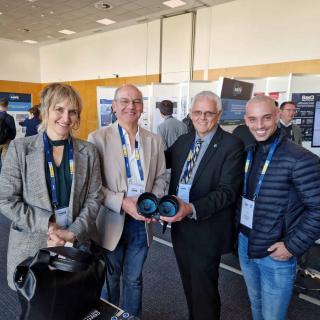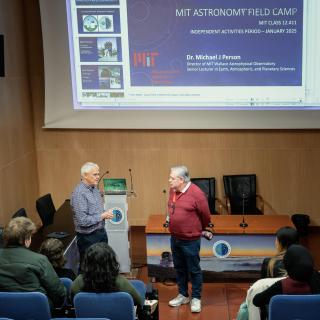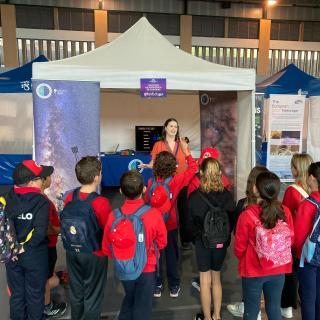The “100XCIENCIA” fórum has for the first time succeeded in bringing together the 20 Severo Ochoa scientific centres of excellence, to explain their lines of research and their most pressing questions. And they have come together to discuss a theme which had been rather overlooked: How should scientists explain their research to society? For this purpose the forum, attended by over 200 people between Wednesday 7th October and Friday 9th in the Circo de Marte Theatre in Santa Cruz de La Palma, has the subtitle “Communicating Frontier Science” and concentrates the majority of its content on science news and popularization.
The science journalist Kenneth Chang, of the New York Times, was the first to talk, and he gave a lectura with the title “Why should the dynosaurs, Pluto, and the Higgs boson be important for us?” He said that science inspires much interest for the general public because there are so many unanswered questions. As an example he gave last week’s news item that water has been found on Mars “our website article had over two million visits” he added. “ Previously we did not know how many people read each article, but now we have a clear idea of which stories really interest people”. He also explained that his newspaper had always placed an emphasis on science, so that his department has a staff of almost twenty. He stressed the importance of the internet in news dissemination, and he noted that many people obtain this information through the social networks. In these circumstances “ the best way to attact people to read our pages is that our stories are the best” both the story itself, and the way it is told. Chang gave his opinion that in order to reach the general public “ clarity is inversely proportional to precision”.
This talk was given after the oficial inauguration by the President of the Cabildo of La Palma, Anselmo Pestana, the Mayor of Santa Cruz de La Palma, Sergio Matos, and the Director of the Institute of Astrophysics of the Canaries, and chairman of the organizing committee of the forum, Rafael Rebolo, who explained that it was very important that all the Severo Ochoa centres in Spain shared their ideas during these days in La Palma, and put an effort into “how we can bring science closer to society”
Anselmo Pestana stated that the Cabildo of La Palma had participated in this meeting because of his firm conviction that the development of science is basic for economic development. The Mayor of Santa Cruz agreed with this, and was very pleased that the meeting is being held in the Circo de Marte Theatre, “the cultural jewel of the island” encouraging the scientists to tell society about their progress.
On Wednesday afternoon, afte 19.00 two sessions were held to which the general public was welcomed, with themes of social interest: talks on “Diabetes” by Joan Guinovart, of the Institute for Research in Biomedicine (IRB Barcelona), and “Taking Decisions” by Luis Martínez Otero of the Institute for Neurosciences, (IN). These took palce in the Circo de Marte Theatre. In addition, in the interests of transmitting science to a range of different audiences, the forum has organized talks to school students in Santa Cruz de La Palma and in Los Llanos on 9th October.
“100XCIENCIA” is organized by the 29 Severo Ochoa centres of excellence regognized up to now by the Ministry of Economy and Competitivity (MINECO) with the patronage of the Cabildo Insular of La Palma and the Bank of Santander, and with the collaboration of the City Council of Santa Cruz de La Palma and Telefónica. This is the first coordinated effort in communication by these research centres, and aims at creating a common area of collaboration to optimize their work in communication and outreach.



